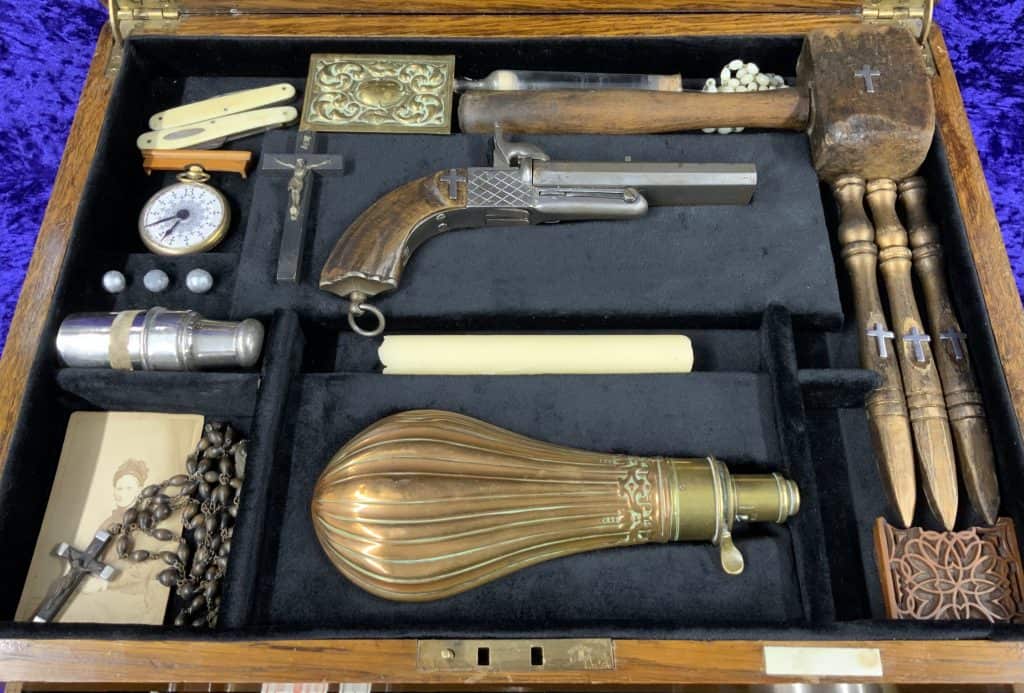Originating from Eastern European folklore and disseminated throughout Europe when the Habsburg Empire invaded Serbia in 1718, the legend of vampires has captivated the cultural imagination for centuries. From the publication of Polidori’s “The Vampyre” in 1819 to Francis Ford Coppola’s Dracula film in 1992, the fascination with vampires has persisted to the present day as a continual source of inspiration for Hollywood.
The belief in real vampires is of course far older, and even persists to the present day. As recent as 2004, a Romanian family exhumed the body of a relative, cut out his heart with scythe and pitchfork, and burned it. This was a continuation of folklore that existed elsewhere in Eastern Europe for centuries.
There has been debate regarding the origin of vampire slaying kits. While some vampirists claim such kits were common in the eighteenth and nineteenth centuries, they were more likely assembled following the publication of Bram Stoker’s novel Dracula in 1897 and marketed to travelers visiting eastern Europe. This unique and extensive kit contains a variety of curios, some associated, from wooden weapons to religious artifacts, equipping its owner with all the necessary tools to ward off or perhaps even slay vampires. Other examples of such kits, varying in size and contents, have been acquired by cultural institutions including the Royal Armories in Leeds and the Mercer Museum in Doylestown, Pennsylvania.
How to kill a vampire
The business of killing vampires was deadly serious, and historical accounts emphasised the need for particular methods and tools. Historically iron implements like knives, nails, skewers, ploughshares and scythes could be used to ‘stake’ the body or to remove the heart. The wooden stake through the heart was perhaps borrowed from fictional interpretations.
Decapitation and/or dismemberment was another common method, but rarely was a specialist weapon used. Next to the simple wooden stake, the sexton’s or gravedigger’s spade would have been the preferred vampire slaying weapon. If these measures were insufficient, the heart would be removed and burned, and/or the entire corpse would be cremated.






